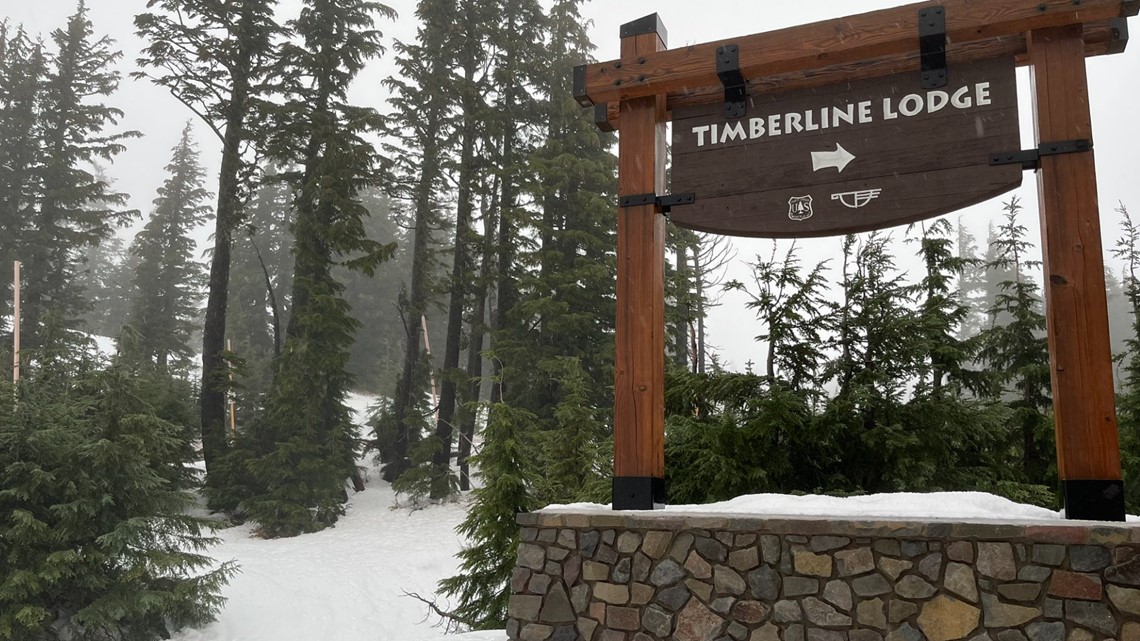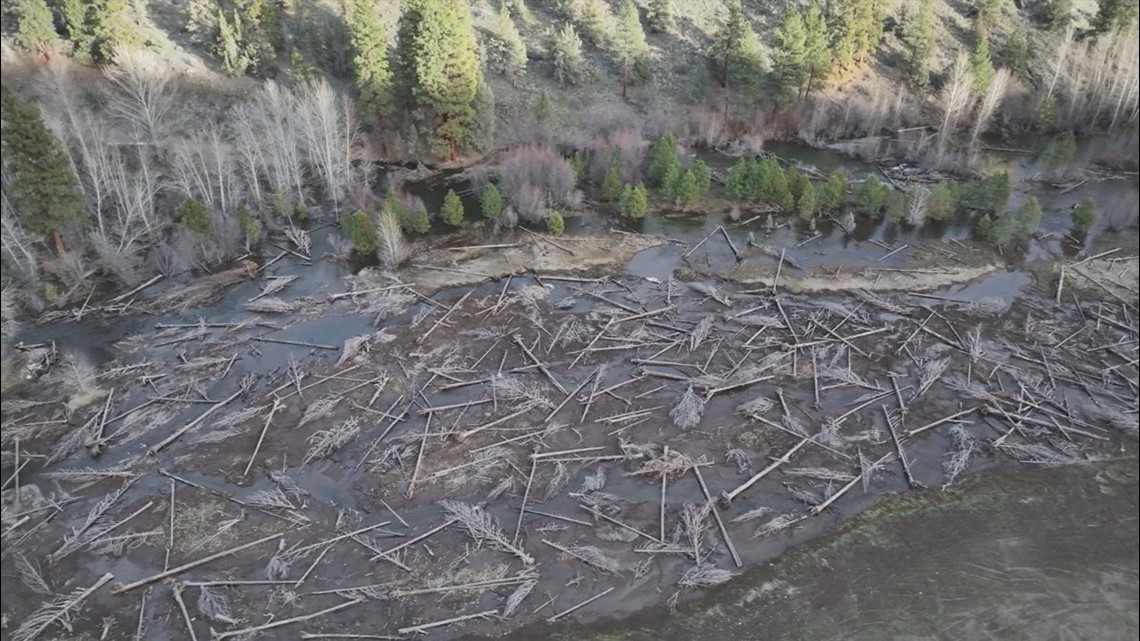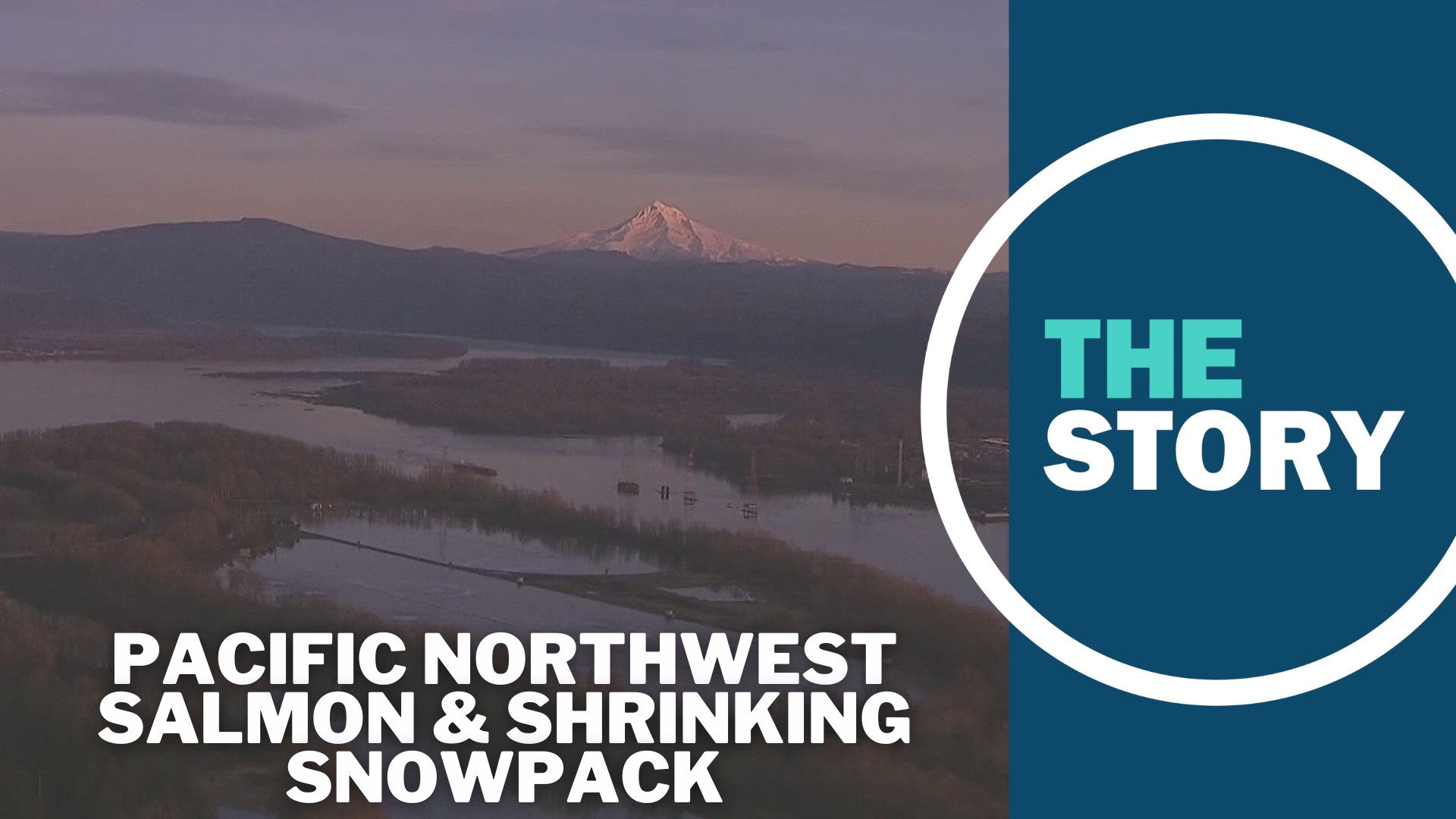SISTERS, Ore. —
Bob Rees has been leading salmon fishing trips in Oregon for nearly 30 years. When he first started as a professional fishing guide in 1996, life was good. He was doing a job he loved, and the fish were plentiful.
But things have changed on Oregon’s rivers over the decades.
“We had closures for wild steelhead, wild Coho salmon, wild spring Chinook, wild cutthroat trout,” Rees said. “We historically had around 200 days of meaningful opportunity. Today we're really down to maybe about 50.”
The decline of salmon and steelhead has a number of causes. Hydroelectric dams have left them cut off from their habitat and altered river flows. Hatchery fish have caused issues with their genetics. Some runs have been over-fished.
But there’s one key indicator Rees looks to when he’s trying to gauge an upcoming season.
“We watch with a lot of anxiety how much snow is piling up in the Cascade Range,” he said.
Snowpack in the Pacific Northwest has been shrinking for years, especially at lower elevations, and that trend is expected to continue as climate change continues to push temperatures upwards.
Under a “business as usual” scenario, where greenhouse emissions remain unchecked, Pacific Northwest snowpack is expected to decline 60% by 2050, according to the most recent Oregon Climate Assessment.
The snow typically acts as a frozen reservoir, releasing its water over the warm summer months, feeding the rivers and streams salmon depend on for survival.
Even with all the other issues facing salmon, Rees said the dwindling snowpack in the Pacific Northwest stands out.
“The only thing that that's going to save this species is year-in and year-out of high snowpack, high flows and cold water that send those juveniles downstream in a rapid manner,” he said.
Warmer winters, smaller snowpack
At the Deer Creek trailhead near Santiam Pass in the central Oregon Cascades, the snow comes up just past Chris Jordan’s shins. He’s unimpressed.
“This is it,” he said. “We have less than a foot of accumulation of snow here at 4,000 feet in February. That's one fifth of what it should be.”
Jordan is a fish biologist with the National Oceanic and Atmospheric Administration, or NOAA. He’s been studying the relationship between salmon and snowpack for decades. He explained that, when it comes to snowpack, looks can be deceiving.
“Above 6,000 feet, it's a normal snow year,” he said, noting it’s been lower elevation snow that has shown the most troubling decline. “Snowpack in the pass level of the Cascades, about 4,000 to 6,000 feet, has been declining over the last decade.”
That’s largely due to rising temperatures caused by greenhouse gas emissions and climate change, Jordan said.
The amount of precipitation that falls in the Pacific Northwest hasn’t declined, but as temperatures have risen, more of it is falling as rain instead of snow.
“That line where its rain versus snow has been moving uphill, and if it moves uphill too far, it moves up beyond where the mountains can capture it,” he said.
And while snowpack has seen the biggest hit in recent years, some aspects of the region’s winter landscape have been declining longer than that.
Glaciers show long-term trends
Snowpack can be highly variable from one season to the next, but the Pacific Northwest’s glaciers offer a macro view of snowpack over the years.
Glaciers form when more snow falls on an area than melts in the summer. Each year, a new layer is formed, compressing the layer beneath it, eventually forming solid ice.
Andrew Fountain, a geology and geography professor at Portland State University, has been fascinated with ice since he was a child.
“When I was in junior high school, I was collecting snowflakes,” he said. “I was one of those kids that kind of really liked ice.”
Fountain has watched as the glaciers in the Northwest’s mountains have showed the effects of climate change.
“Glaciers actually are the tangible indicator of what's happening to our snowpack. If we had lots of snowpack in the winter, we'd have bigger glaciers,” he said. “The long-term trend that we know from measurements, and we know actually just from observing glaciers, is our snowpack is shrinking every year, it's thinning and it's melting out a little bit sooner.”
The Pacific Northwest is home to most of the glaciers in the U.S. outside of Alaska, Fountain said, with seven on Mount Hood alone.
In 1907, those glaciers covered an area of roughly 4.2 square miles. By 2014, those same glaciers covered just 2.4 square miles, a reduction of 43%.


That trend has been repeated on mountains all over the Northwest, from Hood to Mount Ranier to the Olympic Peninsula, and is expected to worsen as climate change continues to raise temperatures.
“The glaciers on the Olympic Peninsula should disappear by 2070,” Fountain said. “That's reflective of disappearing snowpack as well as increased melt in the summer.”
That kind of loss has dire consequences for species that rely on snowmelt.
“Both glaciers and snowpack keep the stream waters cool, which are really important for a number of varieties of fish, including salmon,” Fountain said. “So, as our snow packs disappear, and now as our glaciers disappear, the summer temperatures of the stream water will warm up and become less habitable by important fish species.”
'What we think of as winter has changed'
Certain runs of salmon and steelhead have evolved over millennia, adapting to the reliable schedule of high river flows at specific times of year.
“The timing and amount of flow in the river systems that are fed by snow melt is critical for spring Chinook and for steelhead,” Jordan said. “That's happened over thousands of years, but that transition from a rain system to a snow system is happening over decades, and that's too fast for the fish to keep up. Evolution just doesn't happen that fast.”
For Jordan, it’s easy to tell what kind of salmon runs he’ll see in the later in the year just from looking at the snow, or lack thereof, in the winter.
“You see the water disappearing in February when it should be staying until April and until June, you know what your summer looks like,” he said. “It looks like really poor survival for juvenile salmon in the high desert of Oregon.”
And Jordan recognizes the outlook for snowpack in the future isn’t great. Because of how long greenhouse gasses like carbon dioxide remain in the atmosphere, even if we stopped burning fossil fuels today, temperatures wouldn’t begin to decline for many years.
“What we think of as winter has changed,” he said.
So does that mean our beloved salmon runs are doomed? They don’t have to be, Jordan said.
Finding hope in floodplains
He explained that water is stored in two ways: either in snow — which Jordan called the “icebox” — and as groundwater that soaks into floodplains, which he called the “sponge.”
“We can't change the amount of snow and we can't change how much is stored in the icebox, but we can change how much is stored in the sponge,” he said. “We can make more sponges. We can return sponges that we've dried out and removed from the landscape.”
To show how that works, Jordan showed off restoration on Wychus Creek, outside of Sisters.
The creek is fed from glaciers on Middle and North Sister, two high peaks in the central Cascades, before it feeds into the Deschutes River, which in turn feeds into the Columbia before meeting the Pacific Ocean.
The area that was restored was donated to the Deschutes County Land Trust. Before the restoration, the creek ran in one main channel, with high banks and fast moving water. To bring it back to it’s natural state, crews worked to flatten the land.
“Where the land was high, lower that,” Jordan said. “Where the land was low, fill it back in.”
Today, that section of the creek meanders over a wide area. Instead of a main channel, water flows in and around gravel bars and logs that were harvested from nearby. The aim of these types of restoration projects is to slow the water down.


“Rather than just quickly flowing all the way to the ocean, it has longer residence time,” he said. “It has to be spread out onto the surface of the floodplain so it can soak in, and that's the value of this project.”
Jordan acknowledged that the creek might not look like what most people envision when they think of as a healthy river, but he said that kind of thinking is due for a change.
“This restoration project looks like a mess. There's wood everywhere, there's water everywhere. You don't see a nice channel with a grassy bank that you can walk down and have a picnic on, he said. “That's a different view of what a healthy riverscape looks like.”
But without a reliable snowpack to feed the rivers and streams fish rely on, creating more groundwater sponges like the one on Wychus Creek might be our best best at keeping salmon and steelhead around in the long term.
Just how many miles of river need to be restored to offset the loss of snowpack is unclear, but Jordan said the more, the better.
“It's safe to say we need to do a lot more of it,” he said. “We need to rethink what we want our rivers to look like in order to have fish and to deal with the changes that are happening with climate change.”
'We just don't have a viable business model'
The stakes couldn’t be higher for people like Bob Rees, the salmon fishing guide.
“We used to historically see spring Chinook on the Clackamas River come back around Easter in early April,” he said. “Now a large portion of the run doesn't come back until July and August.”
The declines in snowpack and the species that rely on snowmelt have had ripple effects for salmon fishing trips, Rees said.
“We're having to find other work. There's not a full-time fishing guide left here,” said Rees, who’s had to find other work working on crabbing boats to supplement his income. “We just don't have a viable business model any longer.”
And the ripple effects reach beyond the rivers and streams where Rees takes people to fish.
“We're left with people not spending their money in rural Oregon,” he said. “Fishing represents one of the greatest transfers of wealth from urban to rural communities, and these folks aren't coming down and spending their money on the Oregon coast or in tiny towns like Clatskanie on the Columbia River.”
Rees has seen the restoration efforts on rivers and creeks like the Wychus and he’s hopeful that they can begin to reverse the trend he’s watched develop over the last three decades.
But Rees is a realist, too, so his optimism is guarded.
“Is it going to happen quick enough to save salmon?" he asked. "We're not sure about that."

